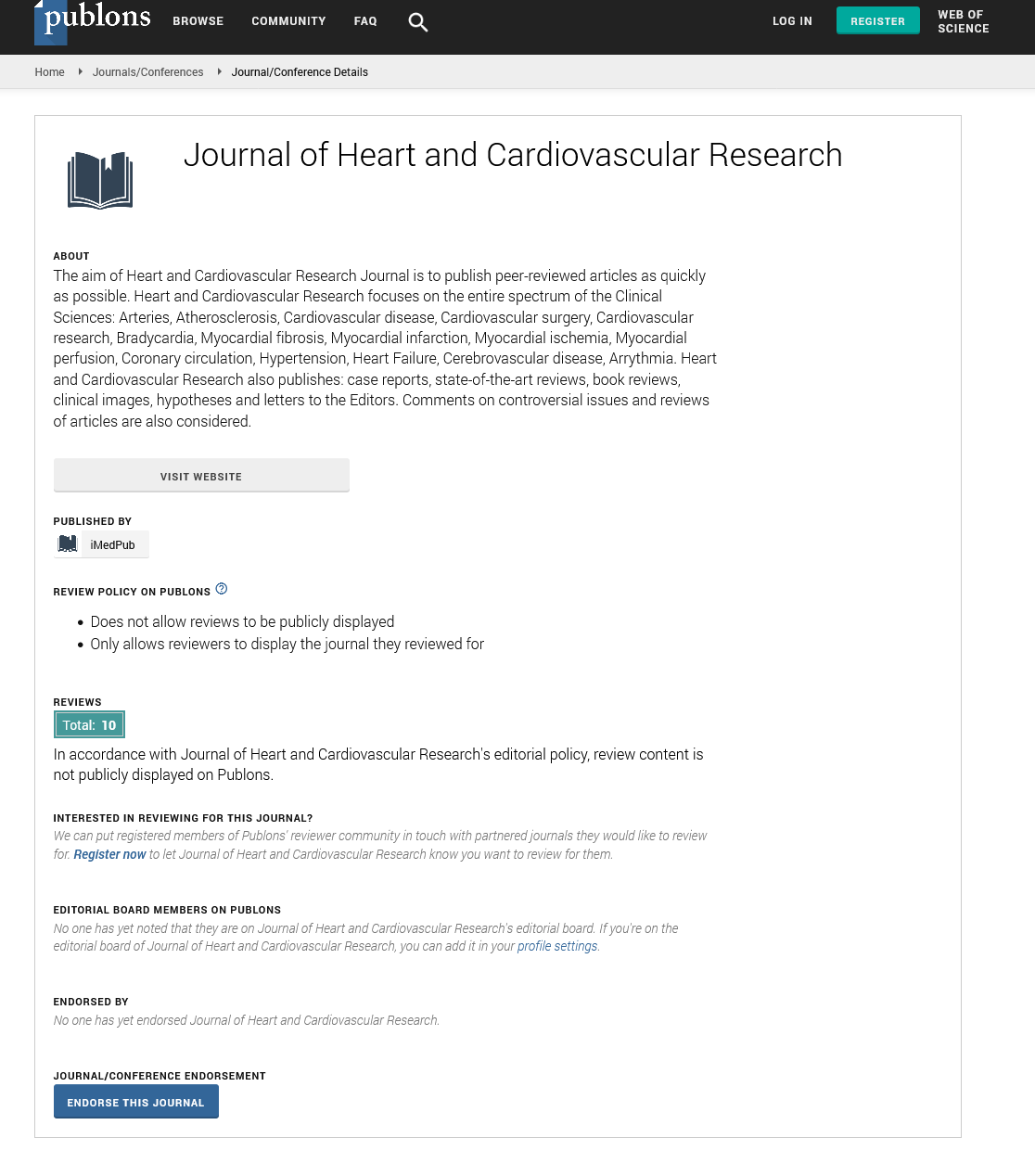ISSN : ISSN: 2576-1455
Journal of Heart and Cardiovascular Research
The benefit of the 17-lead ECG in the acute phase of inferior STEMI in predicting the culprit artery
22nd International Conference on New Horizons in Cardiology & Cardiologists Education
March 07-08, 2019 Berlin, Germany
Mekhdoul, Talamali, Messai and Bouame
Service of Cardiology,HCA
Posters & Accepted Abstracts: J Heart Cardiovasc Res
DOI: 10.21767/2576-1455-C1-003
Abstract
Background & Objective: Acute coronary syndromes with ST segment elevation in inferior territory are due to the occlusion of either the right coronary artery (RCA) or circumflex artery (CX). The prediction of the culprit artery based on the electrocardiogram at admission is not always easy for the clinician. The objective of this study was to evaluate the benefit of 17-lead ECG on admission in predicting the culprit artery in the inferior IDM.
Methodology & Theoretical Orientation: We selected and analyzed retrospectively 17-lead ECG of 113 patients. Those ECG were made at the first medical contact in patients consulting before the sixth hour of the onset of chest pain and whose coronary angiography performed within 24 hours found mono-truncal lesions. We calculated sensitivities, specificities and positive and negative predictive values of ST segments of different leads individually and in combination, which enabled us to create an algorithm that could best predict the culprit artery in the STEMI inferior topography. Our algorithm includes the following electrocardiographic criteria: The first step, look if there’s a right ventricle involvement by examining the V3R and V4R leads, predictive of occlusion of the RCA. The second step, separately analyze the lone inferior STEMI (STE in D2, D3 and aVF) and the inferior STEMI extended to the posterior wall (STE in D2, D3, aVF and V7, V8, V9). In the lone inferior STE: two ECG criteria are used, form of ST segment in D1 and aVL. In the posterior wall extension case 3 criteria: (1) the ratio of the sum of ST elevation in the inferior leads (D2, D3, aVF) to that sum in the back leads (V7, V8, V9) then (2) the ratio of the ST elevation D2/D3 and finally (3) the appearance of ST segment in D1. We applied this algorithm on 236 consecutive inferior STEMI, we identified correctly 225/236 (95.3%) culprit arteries, including those with very dominant circumflex arteries. The 11 patients misclassified by our algorithm, showed multi-truncal lesions and coronarographies were performed repeatedly.
Conclusion & Significance: An 17 leads electrocardiogram during the acute phase of an inferior STEMI allows a detailed analysis of the waveform and hence, lead to the identification of the culprit artery.
Biography
Google Scholar citation report
Citations : 34
Journal of Heart and Cardiovascular Research received 34 citations as per Google Scholar report
Journal of Heart and Cardiovascular Research peer review process verified at publons
Abstracted/Indexed in
- Google Scholar
- Sherpa Romeo
- China National Knowledge Infrastructure (CNKI)
- Publons
Open Access Journals
- Aquaculture & Veterinary Science
- Chemistry & Chemical Sciences
- Clinical Sciences
- Engineering
- General Science
- Genetics & Molecular Biology
- Health Care & Nursing
- Immunology & Microbiology
- Materials Science
- Mathematics & Physics
- Medical Sciences
- Neurology & Psychiatry
- Oncology & Cancer Science
- Pharmaceutical Sciences
